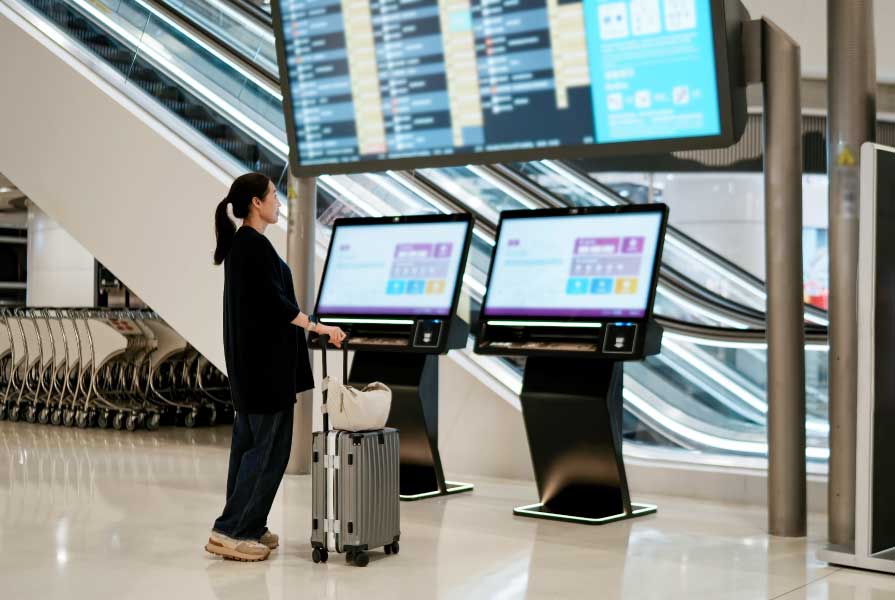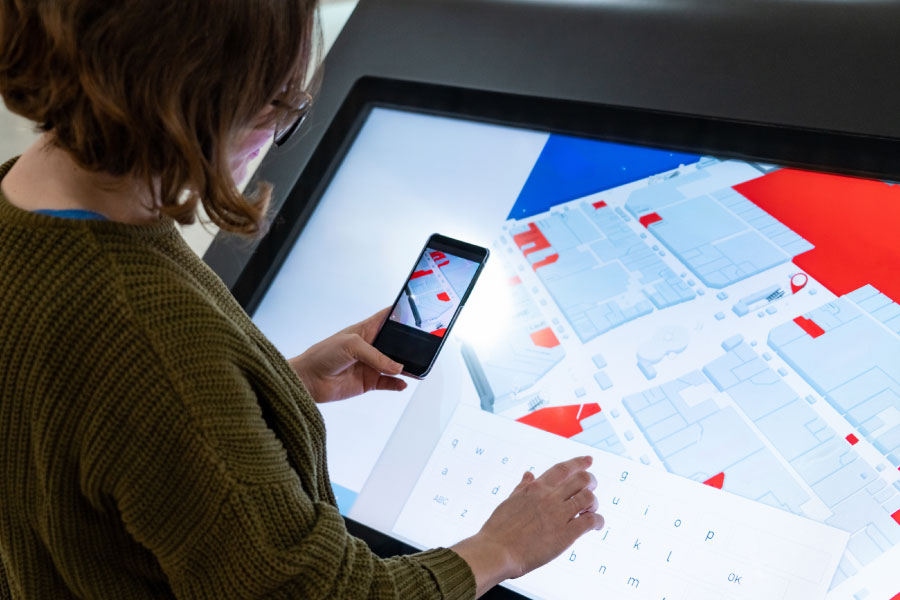Think about it: How many times did you interact with digital signage today? Did you order from your favorite fast-food restaurant at a self-service kiosk? Did you engage with a digital map as you navigated to a store at the mall? Or perhaps a “buy one, get one 50% off” promotion on a screen near checkout enticed you to buy shoes that matched the purse you had picked out? There’s no denying digital signage is everywhere. It is transforming how businesses communicate with their audiences, sell products, educate, and increase engagement—across all industries. Here’s a peek at how seven different industries are tapping into the power of digital signage.
Food Service
Digital menu boards are likely the first application that comes to mind when talking about digital signage at quick-service restaurants. Not only do digital menu boards allow QSRs to display dynamic menus with high-quality images, but they also enable them to easily update prices or menu items based on inventory. They can promote limited-time offers, encourage upselling opportunities, and showcase new items in real time. Additionally, digital displays can guide customers through the ordering process on self-service kiosks. They also provide order status updates, improving the customer experience.
Retail
Today’s brick-and-mortar locations are using digital signage to increase basket size. It starts with eye-catching digital window displays that draw people into the store. Once inside, retailers use digital signage to promote sales and discounts, share real-time inventory updates, enable self-checkout, and deliver personalized experiences. Examples include virtual try-ons or customer-specific product recommendations. In addition to making the in-store experience more convenient for shoppers, digital signage also benefits the store. It streamlines operations, reduces costs, and allows the store to monitor consumer behavior and demand for products.
Transportation
Communication is key in the transportation industry. Travelers want to stay informed about arrival and departure times, gate changes, delays, and other important information related to their trip. Digital signage relays all of these updates, and digital displays enhance the transit experience by engaging and informing passengers. For example, augmented reality navigation at Gatwick Airport in London, interactive art displays at San Francisco International Airport, or 3D holographic announcements at London Luton Airport. At Miami International Airport, an app works with digital signage to display tailored messages to each traveler.

Exceptional Technology Deployment.
Find out why companies trust Bailiwick for deployment of their large-scale digital technology initiatives.
Hospitality
The hospitality industry is all about providing excellent service to create an enjoyable experience for the customer. Digital signage is now a key part of that strategy. At a hotel, for example, touchscreen kiosks allow guests to self-check-in rather than wait in line at the front desk. They can use an interactive map to get directions to their room. There, a personalized message greets them with their name, the weather report, and an itinerary of hotel activities. In the lobby or other common areas, digital signage may display a conference schedule, prompt guests to visit the on-site restaurant with tantalizing images of menu items, or inform them of amenities like a spa or golf course.
Health care
Interactive maps in entrances, hallways, and elevators can help patients and visitors easily navigate large hospitals and medical campuses. Screens in waiting areas may offer patient education with health tips and preventive care information. Healthcare providers also use digital signage to put patients and their families at ease. For instance, providing real-time updates when a patient is in surgery or creating a calming environment in patient rooms. Displays can show the patient’s name, soothing images or entertainment options, and meal choices.

Financial services
Going to the bank is often an inconvenient errand, but digital signage can enhance a customer’s experience. For example, ATMs equipped with interactive teller machines allow customers to speak with a teller via video. This enables more complex transactions or after-hours assistance. For those who prefer to do their banking inside a branch, digital screens can provide educational financial content or entertainment while they wait in line. They can also promote new bank products and services.
Logistics
The logistics industry refers to companies that manage the flow of goods from point A to point B, including transportation and storage. Retailers leverage digital signage to provide real-time inventory updates in this capacity. It facilitates employee communication, displays performance dashboards, and alerts drivers of road conditions or route changes. Stay tuned for an upcoming blog post that delves deeper into the benefits of using digital signage in the logistics industry.
Every industry can benefit from digital signage. Bailiwick helps you tailor digital signage strategies to fit your business model and your approach to customer and employee care. Contact us today to get started.
